Do you want an affectionate lap cat? Here are some wonderful breeds to consider!
British Shorthair
This cat most commonly comes from England, Scotland, and Wales. These cats are one of the oldest breeds in the world, dating back to the first century A.D. In the early nineteenth century, the English practiced selective breeding to attain a grey-blue coat so they could call the cat “British Blue”. In 1871, the Crystal Palace in London featured this “new” breed, which was organized by Harrison Weir who was also known as “The Father of the Cat Fancy”. This “new” breed was the British Shorthair. During World War II, the British Shorthair was cross-bred with Persians to keep the breed alive, and after the war, breeders began to reestablish the “British Blue” coat. By the 1970’s, the British Shorthair was formally recognized and registered by the International Cat Association.
British Shorthairs are known to be quite loving with their families, and they are best with adults and older children. They are also quite welcoming toward strangers and will often approach them spiritedly. As kittens, they are as lively as other breeds. They are known to keep to themselves, but they are still relatively curious while young. They are easy-going cats who love to sit by their owners, and they are moderately active.
This breed’s coat color is one of its major features. Owners have said that their cat’s fur has a plush and soft texture. The “blue” color is the most prevalent, but these cats have also established other patterns and colors such as black, white, warm brown, golden, cinnamon, and cream colored coats. They have strong, broad bones, and they have a rounded head and large eyes that typically have a deep orange color.
British Shorthairs shed very little and have little to no dander, making them a great pet for cat owners who may be allergic. They are not very loud, but they are quite large cats. A healthy weight for a female is between eight and thirteen pounds, and a male’s healthy weight is between twelve and nineteen pounds! The typical price of a kitten can range from $800 to $1,575, and they have a lifespan between thirteen and sixteen years.
Some genetic diseases that British Shorthairs are disposed to include Gingivitis (this is when calculus forms at the gum lines and leads to gums becoming inflamed) and Hypertrophic Cardiomyopathy, which affects the left ventricle (this ventricle is in control of getting oxygenated blood to their lungs and pumping it into their aortic valve). When this ventricle is compromised, it affects that cat’s heart’s ability to pump blood into their aorta, giving less oxygenated blood to other parts of their body.
If you’re interested in adopting a British Shorthair, you can visit Rescue Me! British Shorthair Rescue on Facebook, or search the breed in Pet Adoptions Over Stock.
Napoleon
The Napoleon cat, also known as the Minuet cat, is a new breed according to The International Cat Association. This cat breed was created by well-known American Kennel Club judge, Joseph B. Smith. Smith was inspired by Munchkin and Persian cats, and he wanted to create a breed that seemed purebred and unique. They were originally named Napoleon cats due to their short legs that are inherited from the Munchkin’s DNA, and their name also refers to the famously short Napoleon Bonaparte.
Owners of these unique cats say that their cats are very playful and social, incredibly intelligent, and compliant. Their tempers are like those of their Persian family members, which are known to be passive, human loving, and snuggly pets. As one of the friendlier cat breeds, they are known for greeting their owners, not being aggressive, and for being gentle with children and adults. They are not very vocal, and this could be attributed to their adaptability and because they seem not to have the need to demand attention.
These cats have coat colors ranging from a mono-colored orange, bi-colored gray and white, and tri-colored golden, gray, and orange. They are long haired cats, so be prepared to groom your Napoleon cat often if you plan on owning one…or a few. Who wouldn’t want more than one?! Although they have short legs, these cats can still leap, play, hunt, and run like all other cats; it doesn’t affect their dexterity. Like Persians, Napoleon cats have inherited a thick coat, dense bone structures, and round eyes and face. Napoleon cats have a lifespan between eleven to fourteen years, and should weigh between nine to ten pounds, and a minimum of five to six. The price of a Napoleon kitten can range from $800 to $1,200.
Napoleon cats are predisposed to similar diseases that their Persian ancestors are affected by, such as Epiphora, which is an overflow of tears from the cat’s eyes. This happens when there is not enough drainage from the tear film of the eyes, leaving some Napoleon cats with dampness underneath their eyes. This can also result in the Stenosis of Nasolacrimal Ducts, which causes the complete blockage of their tear ducts. For the ducts to be cleared, it would require a veterinarian to place the cat under anesthesia and flush out their ducts manually. Persian cats are at risk for Polycystic Kidney Disease, which can be passed on to the Napoleon cat through their DNA. If owners are interested in breeding their Napoleon cats, it is important to make sure they are tested for the PKD1 gene (the gene that carries the Polycystic Kidney Disease defect), and to only breed them if your Napoleon cat’s PKD1 gene comes back negative. If you are interested in adopting a Napoleon cat, visit the North Texas Cat Rescue’s website.
Bombay
In the 1950’s, black panthers inspired breeder Nikki Horner to breed a cat that would be like a tiny black panther. By combining the American Shorthair and Burmese breeds, the Bombay cat was created in 1965! However, it wasn’t until 1979 that the breed was registered with The International Cat Association.
Owners of these cats, including myself, rate these cats as being perfect for families, and great with other pets. Bombay cats can live peacefully and happily with children, dogs and other non-dominant cats. They are so lively and loving towards humans, both familiar and new. This breed is usually calm, but they can be very playful, too. These are one of the easiest cats to teach to play fetch, and they are typically very patient when it comes to learning how to walk on a harness. Their owners say that these cats are friendly and affectionate with them, but this breed tends to bond closely with one human and can be quite indifferent to others living in the household.
These cats fashion only one look: all black coat, toes, and nose, and yellow, green, or copper eyes. These cats look similar to Burmese cats, but they have a larger bone structure, longer limbs, and a longer body overall. They have round faces with brilliantly colored eyes, and their black coat is sleek, shiny, and soft to the touch. Bombays have a maximum life expectancy of nineteen to twenty years, and a minimum of thirteen to fifteen years. A healthy weight for these cats is a minimum of seven pounds, and a maximum of ten pounds. Bombay kittens can cost between $500 to $750.
These cats don’t shed as often as a long-haired cat would, but they still require regular brushing. They have a very loud purr, as well as loud cries as most Bombays don’t like to be left alone. When it comes to their health, the breed doesn’t have any serious gene mutations that would pass on to their litter, making them an overall healthy breed. If you are interested in adopting a Bombay, visit Rescue Me, Bombay.
Even with all of these different breeds, rescues, and breeders that provide these specific cats, it is important to first check with your local shelter and see if a rescue cat could be the right fit for you. Visit Safe Haven Animal Sanctuary to see if you can rescue an affectionate cat and give them their fur-ever home.
Elanda-Isabella Atencio, our Feline Editor, is on her road to being a “crazy” cat lady. She has three cats; a moody Missus, a wild Baby Kitty, and notorious Fredrick Douglass. She was raised with cats, chickens, dogs, and geese. From cleaning coops, morning dog runs, picking eggs, to growing catnip, Elanda enjoys pampering her pets. Elanda is a student at New Mexico State University, earning her BA in Creative Writing and is Editor-in-Chief of the online arts journal, Independent Noise and reader for Puerto del Sol. She plans to move to Oregon, where she hopes to take her cats on daily walks when it’s overcast and cool. If you’d like to contact Elanda, email her at eincatencio@gmail.com.

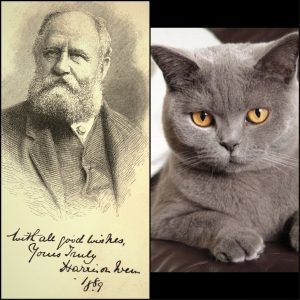

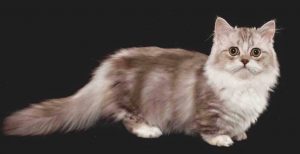
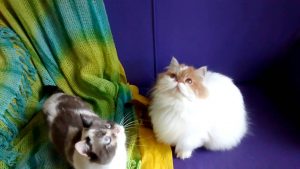
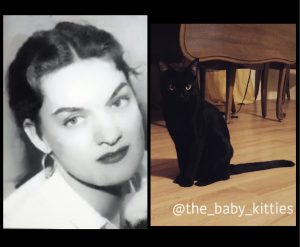

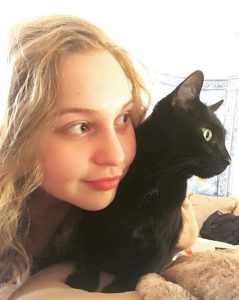
Excellent article, I love it